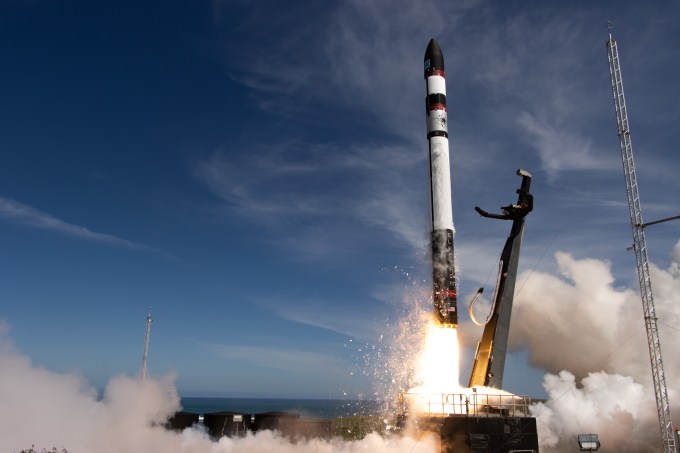Rocket Lab has planned a spectacular stunt in which a massive helicopter grabs an Electron rocket in mid-flight. If they are successful, it may be a significant step toward making rockets reusable.
The business, located in California, is attempting to make its two-stage Electron rocket somewhat reusable. The plan calls for a helicopter to pick up fallen Electron first stages immediately after launch. It is a dramatic move that Rocket Lab will undertake for the first time on its next mission, which is set to launch no early than April 19.
“We’re excited to enter this next phase of the Electron recovery program,” Rocket Lab founder and CEO Peter Beck said on April 5.

“We’ve conducted many successful helicopter captures with replica stages, carried out extensive parachute tests and successfully recovered Electron’s first stage from the ocean during our 16th, 20th and 22nd missions,” he added. “Now it’s time to put it all together for the first time and pluck Electron from the skies.”
The scheduled “There and Back Again” mission will take off from Rocket Lab’s New Zealand base on the North Island’s Mahia Peninsula. It will be the 59-foot-tall (18-meter) Electron’s and Rocket Lab’s 26th orbital voyage.
The Electron’s primary mission on “There and Back Again” is to carry 34 satellites into orbit for a range of clients, but the booster’s return to Earth may garner the most interest.
Rocket Lab will deploy a modified Sikorsky S-92 helicopter into capture position about 150 nautical miles (280 kilometres) off the coast of New Zealand about an hour before liftoff. If all goes as planned, the Electron’s two stages will split around 2.5 minutes after launch, with the second stage continuing to power the satellites into orbit and the first stage returning to Earth.

When the rocket is about 8 miles (13 km) over the Pacific Ocean, it will deploy a parachute before unfolding its bigger main chute at 3.7 miles (6 km), according to Rocket Lab officials in a statement.
The chutes will reduce the booster’s fall velocity to around 22 mph (36 kph). That will be a tolerable pace for the helicopter, flying in and using a hook to snag the parachute line. The Sikorsky will then return the booster to land for evaluation, including determining its viability for reuse.
After all, there is no guarantee that Rocket Lab will succeed on its first attempt.

“Trying to catch a rocket as it falls back to Earth is no easy feat. We’re absolutely threading the needle here, but pushing the limits with such complex operations is in our DNA,” Beck said.
“We expect to learn a tremendous amount from the mission as we work toward the ultimate goal of making Electron the first reusable orbital smallsat launcher and providing our customers with even more launch availability.”
In recent years, the company has experienced a succession of disastrous launches. So let’s see what happens with this one.


